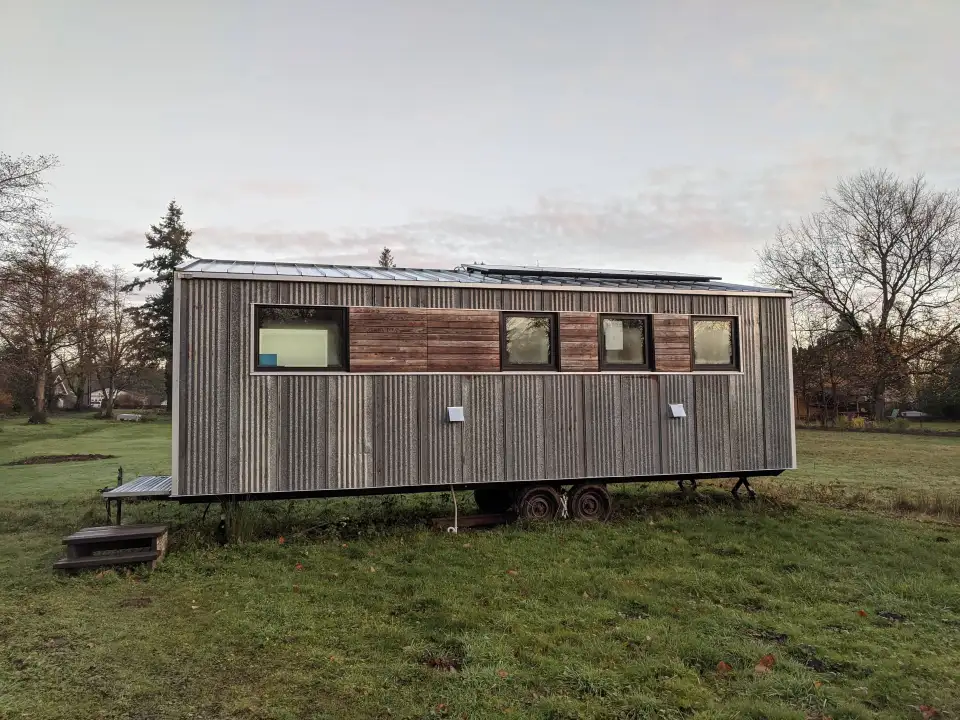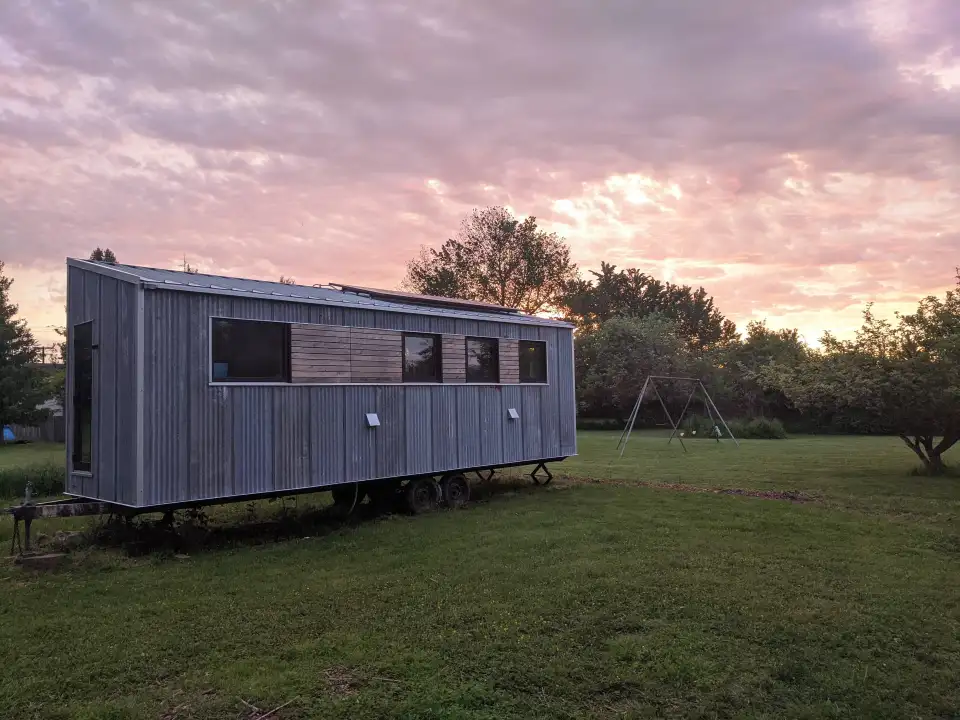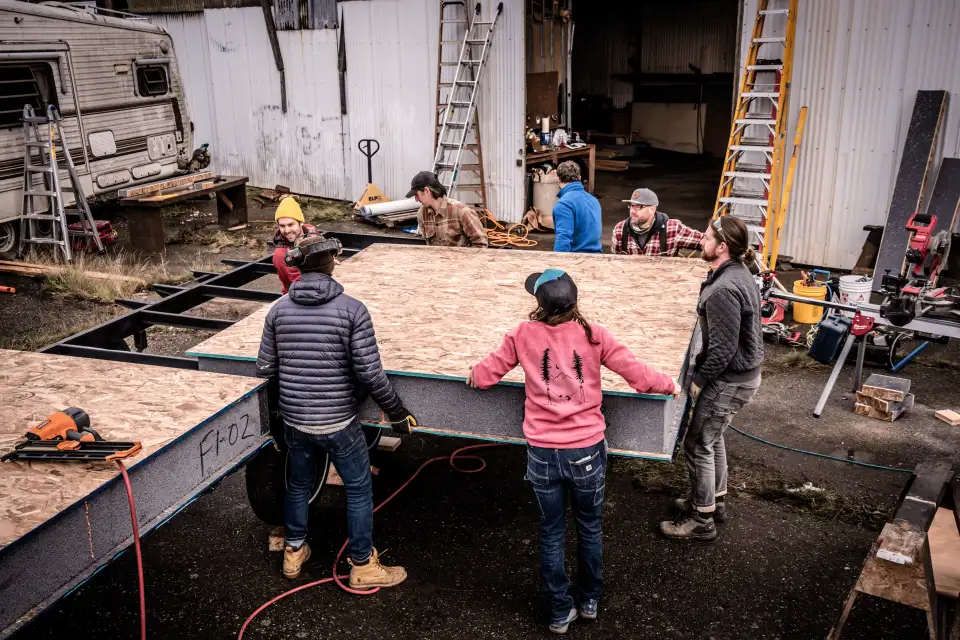
“I’ve been at [bundle] design studio for a year, and it’s my dream job,” says Mackenzie Stickney, project manager at the firm that was founded by Dan Welch and is based in Bellingham, Washington. Stickney, who qualified as a Phius consultant in 2021, moved there to work at [bundle], because it is entirely focused on sustainable and Passive House design—so much so that even its office space is a Phius-certified building. At roughly 8 feet by 30 feet, it’s the smallest such office space yet and the first mobile one.
The [bundle] team designed and built the office-on-a-trailer in 2019. It was built nearby on the land of the Lummi Nation, who donated a trailer and the use of a warehouse as a construction site in exchange for workforce training on sustainable construction methods. The office’s exterior walls were built using structural insulated panels (SIPs) with an interior mechanical chase insulated with sheep’s wool. Indoors, its features include a composting toilet that is directly vented to the outdoors, an HRV specifically balanced to account for the toilet’s exhaust, a small plug-in radiator, and triple-pane windows. What it doesn’t have is any cooling or running water—a strong incentive to not waste the water that is carried in. With much of the West experiencing severe droughts, careful water rationing is increasingly becoming a way of life.

Phius certifications are location specific, so the mobile office was sited optimally on land that Welch owns to maximize solar heat gain in winter and ensure the tiny office met its performance targets. The [bundle] team has maintained summertime comfort by relying on cross-ventilation and nighttime flushing thus far, but with summers getting hotter, there’s talk of installing external shades or finding a shadier site for the warmer months. “The new vernacular in the West might be to shift locations like migratory birds,” says Stickney, only half joking.
Beyond using the mobile office for the staff, [bundle] has plans to use it as an outreach tool, bringing it to conferences, home shows, famers’ markets, and other community gatherings to help people get acquainted with the benefits and features of passive construction. The pandemic squashed those plans, but only temporarily.

[bundle]’s projects tend to be a mix of renovations of older homes with some new construction to increase density, all of which are designed with Passive House details at their core. “In Bellingham the urgency around climate change is very real,” Stickney points out, explaining their clients’ prevailing interest in sustainability, even when passive certification may not be on their radar or compatible with their budgets. As Bellingham is a coastal city, it has a milder climate than its northern Washington location might suggest, making the financial benefits of upgrading to a Phius-certified building less than clear-cut. For clients whose renovation budgets are limited, [bundle] has developed phased master plans so that they can go stepwise into a fully electric future.
The urgency around climate change is also very real for Stickney. Before graduating from California Polytechnic with a Bachelor of Architecture, she attended school in Chico, California and would recreate in the nearby town of Paradise. Paradise has since been totally destroyed by wildfires, the memory of which keeps Stickney on the right track, advocating for addressing climate change in the built environment.